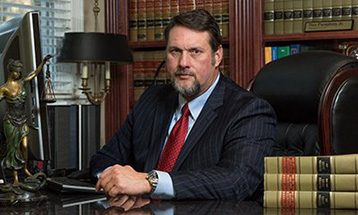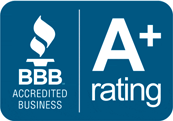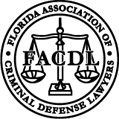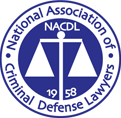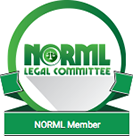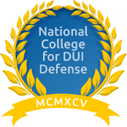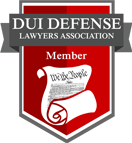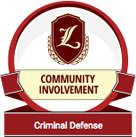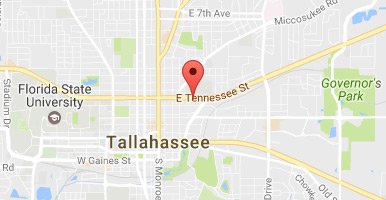- DUI
- Criminal Defense
- Florida DUI
- Traffic Offenses
- Drug Charges
- Marijuana Charges
- Violent Crimes
- Domestic Violence
- Temporary Injunctions
- Weapons Charges
- Theft Crimes
- White Collar Crime
- Juvenile Offenses
- Sex Crimes
- Violation of Probation
- Early Termination of Probation
- Seal or Expunge Criminal Record
- Criminal Appeals
- US Federal Offenses
- Misdemeanor Charges
- Felony Charges
- Co-Defendant Cases
- College Student Defense
- College Student Hearings
- FSU Students
- FAMU Students
- Florida Panhandle Arrests
- Extradition to Florida
- Bench Warrants / Warrants
- Emergency Bond Hearings
- Gambling Charges
- Drone Arrests
- Marsy’s Law
- UAS Infractions
- Introduction of Contraband
- Lying to Police
- Locations
- Case Results
- Our Firm
- Media
- Resources
- Blog
- Contact Us
The Dangerous Intersection Between Disability and Human Trafficking
June 8, 2021 Don Pumphrey, Jr. Criminal Defense, Sex Crimes Social Share
What is Human Trafficking?
The Protocol to Prevent, Suppress and Punish Trafficking in Persons Especially Women and Children, also known as the Trafficking Protocol, defines human trafficking as a crime that involves an act, a means, and an intended purpose.[1] The act involves “the recruitment, transportation or transfer, harboring, or receipt of persons”, while the means can include threats, use of force, coercion, deceit, or abuse of power.[2] The means is by far the most important element as it is centered around consent. It is also important to know that this element is not needed when the victim is a under the age of eighteen.[3] Lastly, the purpose is exploitation, with the most common being sexual or labor exploitation. All forms of trafficking involve similar factors, some more obvious than others, including 1) the victim does not consent to their exploitation; 2) there is an act or acts against the victims such as restricting their ability to move or make choices; 3) the victim more often than not has a relationship to their trafficker and; 4) there is always a duty to protect victims, provide assistance to them and prosecute their abusers.[4]
A Brief History on Disability Rights Law
Historically, disabled individuals have always been targets of human trafficking. America saw its first institutions for people with physical and intellectual disabilities in the late 1800’s.[1] These institutions acted as hubs for human trafficking, specifically in the form of peonage, or debt slavery, where an employer holds a person in servitude in order to pay off a debt.[2] The residents of these institutions were forced to wash dishes in the dining hall, wash loads and loads of laundry, work in the fields, and help to bath, feed, and clean their fellow residents.[3] The Americans with Disabilities Act (ADA), was enacted in 1990 to prevent this kind of discrimination and contains a three-pronged definition of disability.[4] These prongs include a physical or mental impairment that substantially limits one or more major life activity of each individual, a record of such impairment, or being regarded as having an impairment.[5]
The struggle for disability rights law gained momentum many years before the ADA was passed during the civil rights movement, as disability advocates saw the opportunity to “join forces alongside other minority groups to demand equal treatment, equal access and equal opportunity for people with disabilities.”[6] Their work led to the passing of the Rehabilitation Act which ensured that the rights of people with disabilities were protected by law and pushed Congress to enact the Fair Housing Act (FHA), which prohibits providers of housing from discriminating on the basis of race, religion, sex, national origin, familial status or disability.[7]
The Common Disability Misconception & What it Means to be Vulnerable
Before exploring why disabled individuals are more vulnerable to the exploitation embedded in human trafficking, it is imperative to address that society tends to depict disability as an uncommon rarity. In reality, disabled people make up the largest single minority group in the United States, with one in five adults having a disability, whether it be physical, cognitive, sensory, or related to mental health issues.[1] Only when we broaden our idea of what it means to be disabled are we able to see where the vulnerability lies. But what does it mean to be vulnerable? The United Nations defines vulnerability as “a condition resulting from how individuals negatively experience the complex interaction of social, cultural, economic, political, and environmental factors that create the context for their communities.”[2] Vulnerable groups include women, children, indigenous groups, LGBTQ individuals, and people with disabilities.
Why are Disabled Individuals More Vulnerable to Human Trafficking?
Vulnerabilities of people with disabilities include the fact that traffickers will often target them in order to take advantage of their public benefits like Supplemental Security Income (SSI) or Social Security Disability Insurance (SSDI).[1] This financial exploitation becomes human trafficking when an abuser steals these payments and then forces the victim into sexual or domestic servitude. Caregivers can also take advantage of the power dynamic they have with their clients and force them into positions that put them at risk for abuse. As a result of some disabled individuals having difficulties with speech or communication, they are less likely to be able to report their abuse, especially if their trafficker is their caregiver whom they rely on to communicate their needs.[2] The desire for connection through friendships and relationships due to the common isolation many individuals with disabilities experience can also increase the risk of abuse, as traffickers will engage in fake relationships with potential victims and gain their trust. Once doing so, they will try to isolate them from their loved ones so they can be easily exploited.[3] The common isolation disabled people experience can lead them to be “desensitized to touch [and] lack informed sex education”, resulting in them being unaware they are experiencing sexual abuse, that it is wrong, and know of their right to report it to authorities.[4]
Unfortunately, individuals with disabilities that impact “intellectual, cognitive, or communication functions or those individuals with mental health diagnoses” experience widespread societal discrimination that can result in their family, friends, and even the authorities not believing them when they report their abuse.[5] Behavioral, mental health, and drug rehabilitation centers often act as playgrounds for traffickers who go there to prey on people with disabilities. This is especially disturbing as we like to think of these places as safe havens that people go to in order to face their struggles and pain, not where people go to be further victimized from it. This is not to say that all facilities and centers are breeding grounds for this kind of despicable abuse, however, the fact that any person is taken advantage of in such a vulnerable state is enough to warrant making this issue apparent. In fact, the National Human Trafficking Hotline has reported 105 victims who were recruited at such facilities since January 2015.[6] In some situations “the recruiter is another patient who is sent into the facility by the trafficker to lure out victims who may be questioning their decision to seek and continue treatment.”[7]
What are the Solutions to Human Trafficking?
First and foremost, we must acknowledge the dangerous intersection between disabled individuals and human trafficking and work to make this issue more known. Next, we must implement and expand legal protections. Some states have trafficking laws that enhance criminal penalties for trafficking crimes. In Florida, the trafficking penalty for commercial sexual activity increases from a first-degree felony to a life felony when “the crime is committed against a person who is mentally defective or mentally incapacitated.”[1] Not only is the language in this penalty enhancement highly offensive, it is also less effective given the fact that there is no federal legislation within the United States that solely addresses disabled women and works to lessen the vulnerabilities they face.[2] Therefore, both federal and state policies must be implemented to address the intersection of disability and human trafficking.
Preventative efforts must also be taken. Healthcare professionals working with individuals at risk for human trafficking must engage in prevention efforts with their clients consistently. This would include providing comprehensive health education that encompasses discussions about sex trafficking, exploitation, relationship violence and how to safely access help and resources.[3] Those that work within institutions such as behavioral and mental health facilities must be given extensive training on signs of sexual violence and exploitation and know how to intervene and report such cases.[4] Lastly and most importantly, the general population must be made more aware of what groups are increasingly at risk for human trafficking. This is an instrumental societal change that must be made, as film and television have created a false narrative about what trafficking victims look like by not including members of the most vulnerable groups in their media portrayals. In addition, anti-trafficking campaigns can often disserve the public by frequently depicting trafficking victims as young white girls. Although this group is vulnerable to trafficking, they are not statistically as vulnerable as girls of color or girls with disabilities. Correcting such misconceptions of what a human trafficking victim looks like while also urging the public to become more aware of the indicators of human trafficking are both measures that can potentially help expose victims of human trafficking that are hidden in plain sight.
This Article was Written by Sarah Kamide
[1] Human Trafficking State Laws, National Conference of State Legislatures, https://www.ncsl.org/research/civil-and-criminal-justice/human-trafficking-laws.aspx (last visited Apr. 13 2021).
[2] The use of “women” is not to say that disabled men do not need more legal protection. It is used to recognize that women are generally more vulnerable to trafficking than men, and that vulnerability intersecting with the vulnerabilities that outline disability mean that disabled women have an even greater risk of abuse. As a result, federal legislation must be enacted that addresses them specifically.
[3] Hannahbeth Franchino-Olsen et al, Minor Sex Trafficking of Girls with Disabilities, 13 Int’l J. Hum. Rts. Hlth. C. (2020).
[4] Id.
[1] Individuals with Disabilities May Face Increased Risk of Human Trafficking, Polaris Project (Aug. 15, 2018), https://polarisproject.org/blog/2018/08/individuals-with-disabilities-may-face-increased-risk-of-human-trafficking/.
[2] Id.
[3] Id.
[4] Id.
[5] Id.
[6] Id.
[7] Id.
[1] Jessica. S. Oppenheim, Attorney, The Arc of New Jersey, Addressing Human Trafficking of People with Disabilities: Collaboration and Activism, (presentation at https://static1.squarespace.com/static/58a7d37 0ff7c50f538d6a78e/t/5beb397f4d7a9c 3f732d0526/1542142336291/ARC+OF+NJ+-+Addressing+Human+ Trafficking+of+People+with+Disabilities.pdf.
[2] Michele Clark et al, An Introduction to Human Trafficking: Vulnerability, Impact and Action, United Nations Office on Drugs and Crime (2008), https://www.unodc.org/documents/human-trafficking/An_Introduction_to_ Human_Trafficking_-_Background_Paper.pdf.
[1] Peter W.D. Wright & Pamela Darr Wright, The History of Special Education Law in the United States, Wrightslaw (Jan. 3, 2021), https://www.wrightslaw.com/law/art/history.spec.ed.law.htm.
[2] Peonage, Dictionary.com (2021).
[3] Ruthie-Marie Beckwith, From Peonage to Poverty (2016).
[4] A Guide to Disability Rights Laws, U.S. Department of Justice (2020), https://www.ada.gov/cguide.htm.
[5] 42 U.S.C. § 12102 (2009).
[6] A Brief History of the Disability Rights Movement, ADL Fighting Hate for Good (2021), https://www.adl.org/ education/resources/ backgrounders/disability-rights-movement.
[7] The Fair Housing Act, The United States Dept. of Justice (Dec. 21, 2017), https://www.justice.gov/crt/fair-housing-act-1.
[1] Luz Nagle, Professor of Human Trafficking, Stetson University College of Law, Migration, Smuggling and Human Trafficking: The Importance of Victim Identification (January 25, 2021).
[2] Protocol to Prevent, Suppress, and Punish Trafficking in Persons Especially Women and Children, Supplementing the United Nations Convention Against Transnational Organized Crime, art. 3, U.S., Nov. 15, 2000, U.N.T.S. vol. 2237.
[3] Id.
[4] Luz Nagle, supra.

